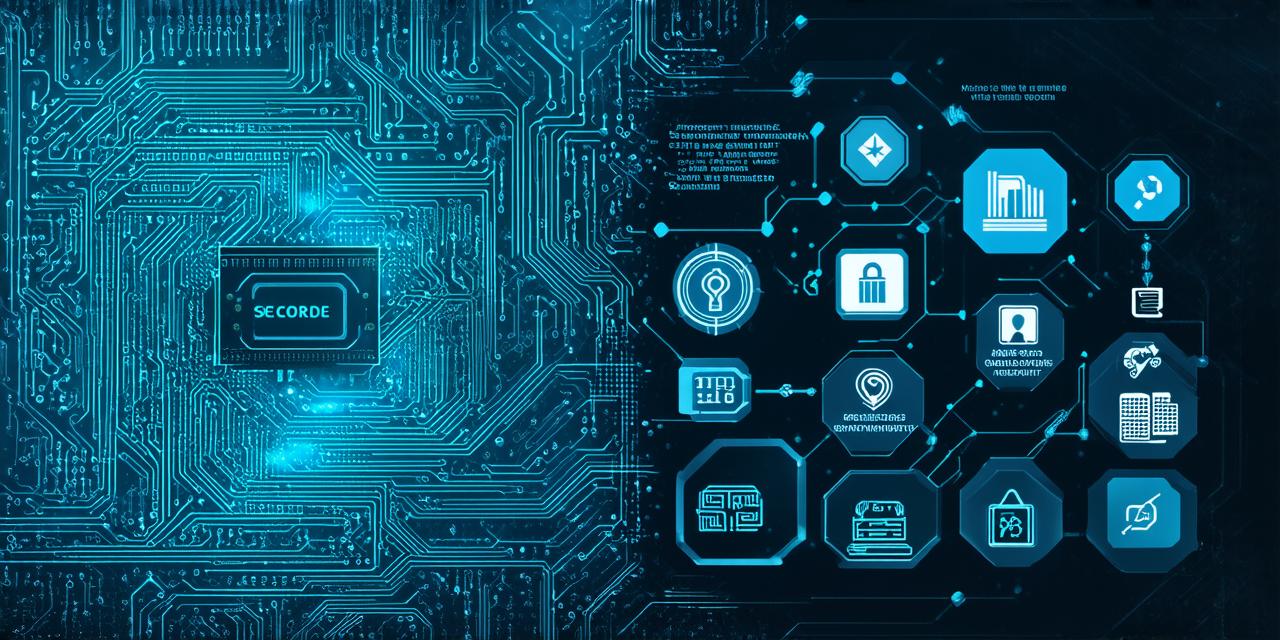Blockchain technology has taken on the world by storm since its inception in 2008 with the creation of Bitcoin. It is a decentralized, distributed ledger that records transactions across a network of computers. In this article, we will explain how blockchain works simply put.
What is Blockchain?
Blockchain technology allows for a secure and transparent way to store and transfer data without the need for intermediaries like banks or government agencies. It is essentially a digital ledger that contains information about transactions between parties. This ledger is distributed across a network of computers, which ensures that it cannot be altered or tampered with.
How Does Blockchain Work?
At its core, blockchain technology consists of blocks that contain information about transactions. Each block is encrypted and linked to the previous block in a chain, making it difficult for anyone to alter the data without being detected.
Let’s take a closer look at how this works:
Transactions
A transaction is any exchange of value between two parties. This can be anything from the transfer of money to the exchange of goods or services.
Block Creation
When a new transaction occurs, it is broadcast to the network of computers that make up the blockchain. These computers verify the transaction and add it to their own ledger. Once verified, the transaction becomes a part of the block.
Block Verification
Each block contains a cryptographic hash that links it to the previous block in the chain. This hash is generated by using the data from the previous block and the new transaction. The network of computers must agree on the validity of the hash before the new block can be added to the chain.
Mining
Mining is the process of verifying transactions and adding new blocks to the chain. The first computer to verify a new block is rewarded with a certain amount of cryptocurrency, which incentivizes them to participate in the network.

Decentralization
One of the key features of blockchain technology is its decentralized nature. This means that there is no central authority controlling the network. Instead, decisions are made by consensus among the participants in the network. This ensures that the network remains secure and transparent, as any attempt to manipulate the data would require a majority of the network to agree.
Real-Life Examples of Blockchain Technology
Blockchain technology has many real-life applications beyond just cryptocurrency. Here are a few examples:
Supply Chain Management
Supply chain management is a process that involves tracking and managing the flow of goods and services from production to delivery. By using blockchain technology, supply chains can become more transparent and secure. Each step in the supply chain can be tracked and verified, making it easier to identify any issues or bottlenecks in the process.
Voting Systems
Blockchain technology has the potential to revolutionize voting systems by providing a secure and transparent way to conduct elections. By using blockchain, voting records can be stored on a distributed ledger that is resistant to tampering and manipulation. This would ensure that the results of an election are verifiable and trustworthy.
Healthcare Records
Healthcare records contain sensitive information that must be protected from theft and fraud. By using blockchain technology, healthcare records can be stored on a decentralized ledger that is secure and resistant to hacking. This would ensure that patient data remains confidential and cannot be accessed by unauthorized parties.
FAQs
Here are some frequently asked questions about blockchain technology:
1. What is the difference between blockchain and database?
* A blockchain is a decentralized, distributed ledger that records transactions across a network of computers. A database, on the other hand, is a centralized repository of information that is stored on a single server or group of servers.
2. How secure is blockchain technology?
* Blockchain technology is extremely secure due to its decentralized nature and use of cryptography. It is resistant to tampering and hacking, making it an ideal solution for storing sensitive data.
3. What are the potential risks of using blockchain technology?
* While blockchain technology is generally secure, there are some potential risks to consider. These include the risk of 51% attack, where a single entity controls more than half of the network, and the risk of smart contract vulnerabilities, where code can be exploited by malicious actors.
4. What is the future of blockchain technology?
* The future of blockchain technology is bright, with many potential applications beyond just cryptocurrency. Blockchain has the potential to revolutionize industries such as supply chain management, voting systems, and healthcare records. As the technology continues to evolve, we can expect to see even more innovative uses for it in the coming years.
Summary
In conclusion, blockchain technology is a powerful tool that allows for secure and transparent data storage and transfer without intermediaries. Its decentralized nature and use of cryptography make it resistant to tampering and hacking, making it an ideal solution for storing sensitive data. While there are some potential risks to consider, the future of blockchain technology is bright, with many real-life applications beyond just cryptocurrency.
